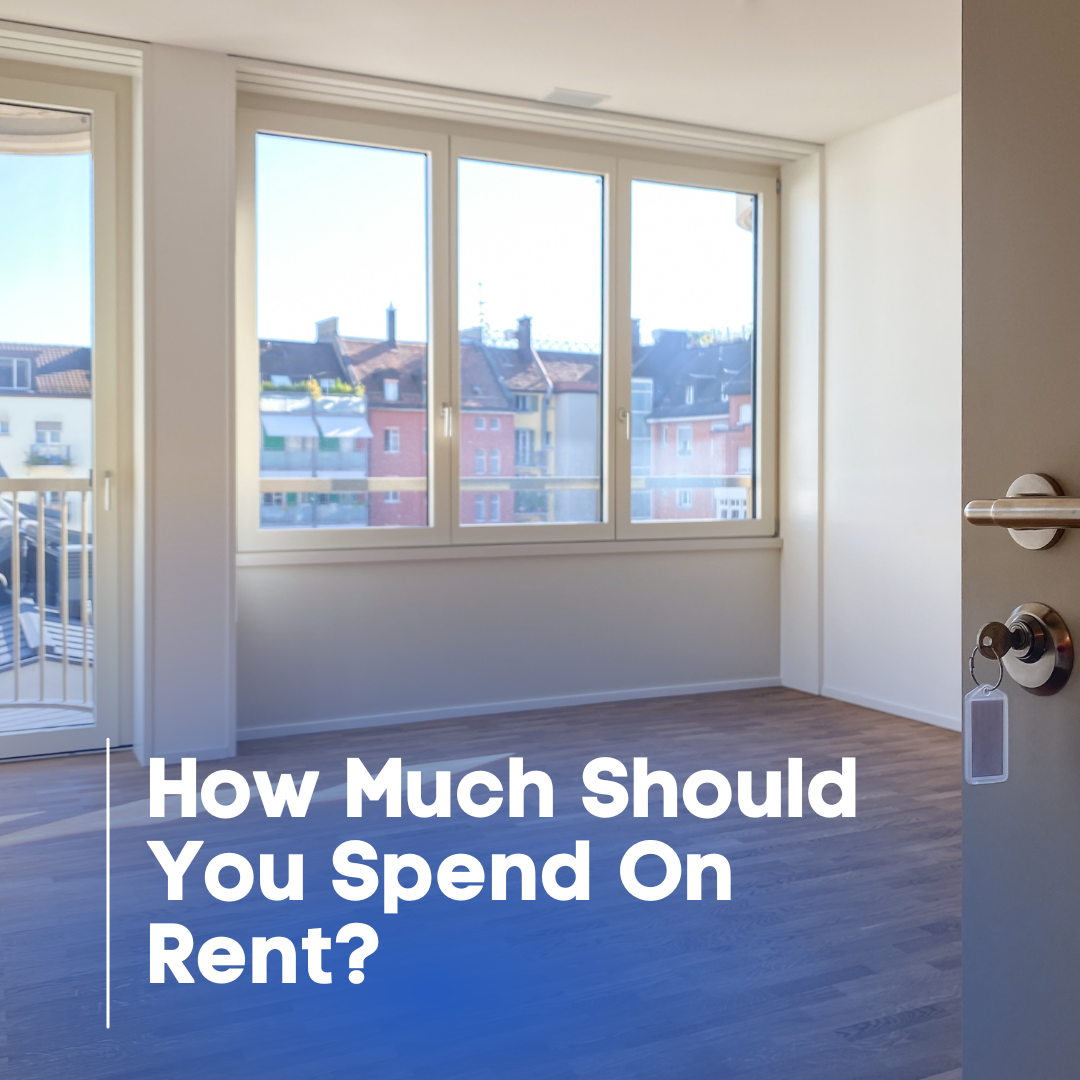
How Much Should You Spend On Rent?
September 17, 2020 8:38 pm Leave your thoughtsDiscover how much you should spend on rent! Apartment living is continually on the rise as more tenants start their renting journey. As home prices increase, more people are being drawn to the advantages of renting. The downside is that with more people living in apartments comes higher rental costs. Your rental cost can vary by location, amenities, roommates, floor plan, and utilities. It’s important to know what rental prices you can expect so that you can prepare accordingly.
Perhaps you have found yourself in a living situation where you’re paying an excessive amount of rent, and you’re wondering if it’s really worth it. In this blog post, we will explore how much you should be paying for rent so that you can ensure you’re making the most effective decisions. We’ll also cover cities with the highest and lowest rental costs, and how much of your income you should be spending on rent.
The rent price that works best for your lifestyle is more than just plugging numbers into a calculator. It’s important to consider other factors such as the amenities your apartments will provide, proximity to local attractions, etc. To maximize your living experience, you need to analyze the entire community, not just the cost. Ensure that you consider the full picture of renting before you make an apartment decision!
The 30% Rule For Renting
The 30% rule came from the U.S. government’s guideline on housing affordability. It suggests that individuals should spend no more than 30% of their income on rent each month. Historically, this rule was created so that households could afford essential expenses while maintaining proper housing. However, in today’s diverse economic landscape, it is clear that the 30% rule may not always align with individual circumstances. It may be unrealistic for many locations and may not be helpful to consider.
For instance, in high-cost areas, following the 30% threshold might mean compromising on living standards or location convenience. In contrast, for individuals with low incomes or who live in areas with more affordable housing, allocating 30% to rent might be too much. The 30% framework can be helpful to evaluate what you’re paying for rent. If you feel that it’s not applicable to your scenario, then there are other ways that you can assess your financial situation and come to the best conclusion.
Evaluate Your Financial Situation
It’s essential to start planning for rent by reviewing your financial standing. This will help you determine how much to spend on rent. You can first start by calculating your total monthly income including your expenses, investments, and any source of revenue. From here, you will want to list out your continual expenses like groceries, utilities, transportation, debt, and more. Be thorough to ensure that you’re tracking everything both saving and spending-wise.
The next step will be to lay out your financial goals, as this will be essential for making informed decisions about your rental budget. Take time to reflect on short-term and long-term financial objectives. The choices that you have in the future will impact these goals, as well your individual lifestyle choices.
You should plan to also use a resource that will help you calculate how much you can afford to spend on rent. Use a rent affordability calculator to account for how much of your income should be set aside for rent on a monthly basis. Monthly rent shouldn’t put you in more debt, and that’s why it’s essential to calculate the associated costs beforehand. Once you have a clear rental budget in mind, you can be more productive with your apartment search. It’s important to remember that your personal finance is indeed personal, and may vary from other people.
Considering Location and Lifestyle
The location of your apartment is likely the number one indicator of how much money you will spend on rent. Where you’re located can make a massive difference in the amount of money that you’re spending each month, from your commute to work and local attractions to the general cost of living in that area. It’s a crucial step in the rental process to calculate these factors in addition to the price of rent.
For example, if you have a long commute to work each day, the gas cost will factor into your overall monthly budget. If you live near public transportation, you can save on commuting, and perhaps spend more on rent. It’s more than just considering your income. It’s looking into what your day-to-day routine will look like, and how that will affect how much money you spend.
Below are the cities with the highest rental costs in the U.S. These cities have a high demand for housing, limited availability of rental units, and usually strong job markets.
New York City, New York
Boston, Massachusetts
Oakland, California
Miami, Florida
Below are the cities with the most affordable rental costs in the U.S. These cities typically have lower costs of living, less demand for housing, and/or a higher availability of apartments.
Wichita, Kansas
Toledo, Ohio
El Paso, Texas
Memphis, Tennessee
Oklahoma City, Oklahoma
Indianapolis, Indiana
Louisville, Kentucky
The amenities that your apartment has also relate to your rental costs. Personal amenities such as in-house washers, dryers, free parking, etc., can limit the amount of money you spend outside of rent. Community amenities can also impact your budget. Many apartments now include a wide variety of features and services to make your life easier. These can include anything from a pet wash station to a fitness center.
The right combination of amenities could help limit your cost of living in other areas. It’s important to be aware that apartments may charge you additional fees along with rent. So regardless of what you’re looking for, it’s essential to consider how your new amenities will affect your wallet. The right amenities can improve your lifestyle and help you save money at the same time!
Planning Your Budget for Security Deposits
The deposit typically equals one month’s rent, but it can vary. For example, in high-demand cities like San Francisco or New York, you might need to budget for a deposit that’s equal to two months’ rent due to the competitive rental market. On the other hand, in cities with lower rental demand, such as Wichita or Tulsa, the deposit may match the standard one-month rate.
The amount you’ll need for a security deposit also depends on the apartment’s condition and amenities. A newly renovated apartment with high-end finishes might require a higher deposit compared to a more basic unit.
Budget For a Pet-friendly Apartment
- Dog: For a dog, you might encounter a one-time pet deposit ranging from $200 to $500, depending on the apartment complex. Additionally, there could be a monthly pet fee of $25 to $50 per dog.
- Cat: Cats generally have similar deposit and fee structures as dogs, with a one-time pet deposit typically ranging from $100 to $300 and a monthly fee of $20 to $40 per cat.
- Small Mammals (e.g., hamsters, guinea pigs): Small mammals typically don’t incur additional apartment fees. However, you’ll need to purchase a suitable cage or enclosure, which can range from $20 to $100 or more depending on the size and quality.
Tips for Finding Affordable Housing
It’s no secret that rental prices are rising across the nation. As for single-family housing, rents are now 36.6% higher than pre-pandemic prices – compare that with multifamily apartment prices which have gone up 23.6% since before the pandemic. Many people face the reality of needing to find homes that are more affordable and better for their budget. Finding affordable housing can be a challenge so use the tips below to locate your next apartment.
- Research Rental Markets: Take the time to research options in different neighborhoods or cities. Look for areas where rent prices are more affordable while still meeting your needs in terms of location and amenities.
- Consider Roommates or Shared Housing: Sharing an apartment with roommates can significantly lower your housing costs. Just be sure to find compatible roommates and establish clear agreements regarding rent, utilities, and household responsibilities.
- Explore Alternative Housing Options: Consider alternative housing options such as renting a room in someone’s house, co-living spaces, or affordable housing programs offered by local government or nonprofit organizations.
- Be Flexible with Location: Expanding your search area beyond the most expensive neighborhoods or cities can lead to more affordable housing options. Look for neighborhoods that may be up-and-coming or undergoing revitalization where rents may be lower. It may be a short distance away but have an entirely different cost.
- Look for Rental Incentives: Keep an eye out for move-in specials or waived application fees. These incentives can help lower your upfront costs and help you move in at a closer date.
- Check for Income-Restricted Housing: Some housing developments offer units at reduced rents for individuals or families with lower incomes. Look for income-restricted housing options in your area and see if you qualify.
- Seek Financial Assistance: If you’re struggling to afford rent, look into financial assistance programs offered by local government agencies or nonprofit organizations. These programs may provide rental subsidies, rental assistance, or other forms of financial aid to eligible individuals or families.
Weighing Rental Cost Trade-offs
Consider the lifestyle trade-offs of spending more or less on rent. Spending more on rent may give you a nicer living space in a better location. It could also bring you closer to amenities, or provide you with a shorter commute to work. On the other hand, spending less on rent may free up more money for other financial goals or needs. It could also result in sacrificing amenities, living in a less desirable neighborhood, or facing a longer commute. It’s essential to weigh these lifestyle trade-offs carefully and prioritize what matters most to you.
Every dollar spent on rent is a dollar that cannot go towards other financial needs. Consider whether the benefits of a more expensive rental justify the cost. While it’s essential to prioritize affordability and avoid overspending on rent, it’s also important to consider how your choices will impact your overall quality of life. Take the time to find a balance between affordability and quality of life. Search for a rental property that meets your basic needs while also aligning with your lifestyle. By finding this balance, you can enjoy a comfortable and fulfilling living without jeopardizing stability.
Planning For Future Rental Costs
Considering how your housing needs may change over-time is essential for long-term financial success. As life circumstances evolve, such as changes in family size, career opportunities, or health considerations, your housing needs may also shift.
You should carefully set aside savings for unexpected expenses. Be prepared for rent increases that may often be outside of your control. You can also establish an emergency fund specifically for housing-related expenses. Additional savings can provide a safety net in case of unforeseen circumstances. Keep in mind that you should be reassessing your budget periodically so that you can keep adapting to changing circumstances. This will help you move forward with confidence and minimize the financial strain associated with surprise costs.
Keep in mind that utilities can often be a cost that takes both residents and prospects by surprise. These expenses can change based on various factors outside of your control. Some apartments may have utilities included, while others require you to pay separately. It’s essential to include a detailed estimate of your utilities in your rental cost. The type of utilities you pay for can significantly influence how much you will be paying every month. As you look to your future of renting, consider all of the financial factors that will impact you.
Find Your New Apartment Today!
Categorised in: Apartment Living
This post was written by Isabella Housel
Isabella Housel is a passionate and versatile professional writer with a deep love for words and a commitment to crafting compelling content that engages, informs, and inspires. With many years of experience in the industry, she has honed her skills across various genres, from creative storytelling to informative articles and technical documentation.




